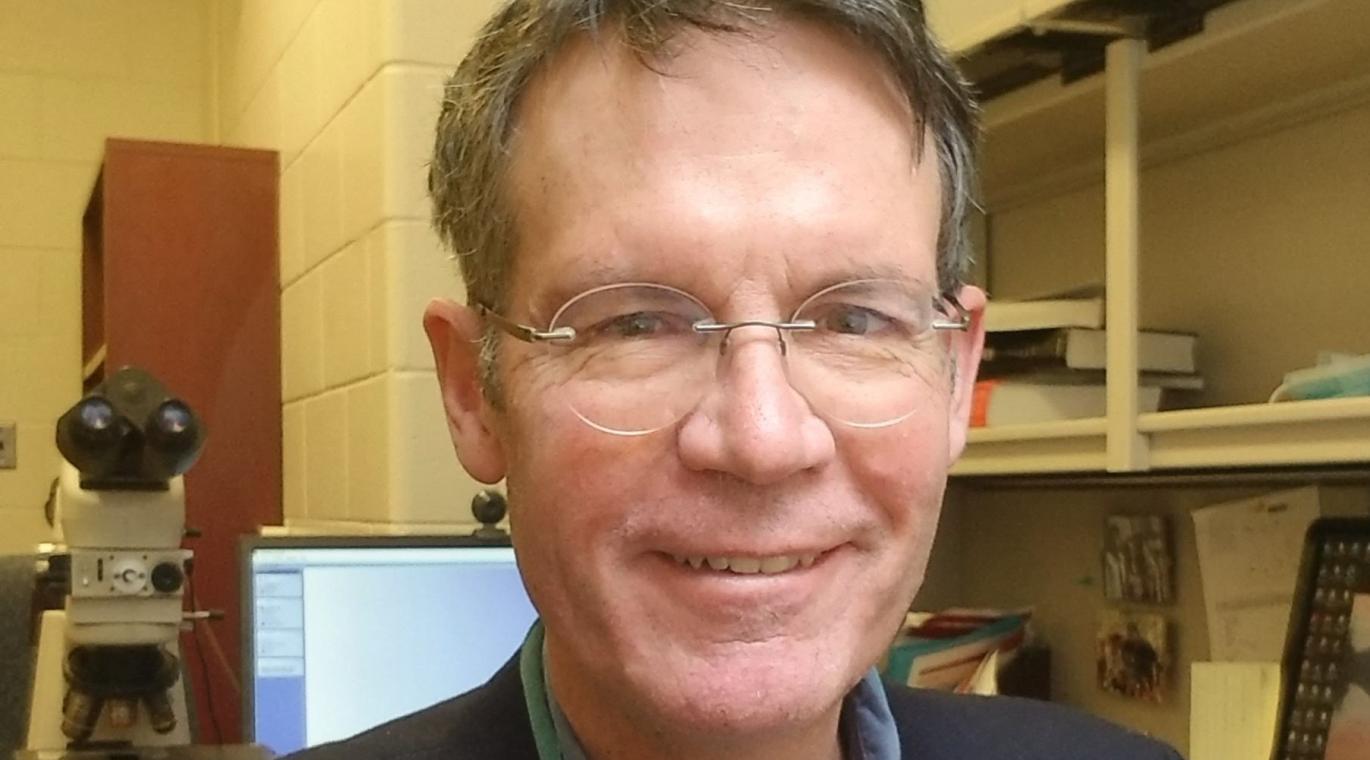
After 30 years at Queen’s, Dr. David LeBrun is retiring at the end of March. But what will he take with him? Memories of hard work and collaboration – some born out of trips to local staple The Grad Club on Barrie Street.
“Chatting with colleagues, friends and students at Grad Club after work on Fridays has been an institution for me. Besides some good times, ideas are tossed around and important research collaborations have been developed. For me, this kind of collegiality is one of the really good things about the academic community here at Queen’s and in Kingston,” he explains.
Dr. LeBrun also leaves with a sense of accomplishment after running a successful research lab. “Service work is a pull from others while research is a push from one’s self. You have to manage people and money – many of my memories with the greatest emotional impact have to do with launching the lab and keeping it funded and going. It’s like running a small business; no one tells you how to do this and you’re accountable,” he says. “Getting my first research grant and getting a technician, important publications, this was all very exciting to me. You sort of receive an emotional buzz. I’m pretty sure that running an independent research lab is the most difficult thing I’ve done.”
What innovative research has been accomplished in this lab? “My research has been in two broad areas: experimental and correlative. Our experimental research has focused on working out molecular mechanisms by which certain gene mutations transform normal blood-forming progenitor cells into malignant leukemia cells. This work has including a wide variety of experimental techniques, including virus-mediated gene transfer, hematopoietic stem cell transplantation in mice, protein-protein and protein-DNA binding studies, and genome-wide mapping of protein binding in intact cells,” he says. “Our correlative research, much of which has been carried out in collaboration with Dr. Tara Baetz, a medical oncologist, has generally aimed to predict clinical outcomes including, for example, patients’ responses to treatment based on data obtained from pre-treatment biopsy specimens.”
Dr. LeBrun is completing a successful medical career at Queen’s after returning here in July 1994. “I graduated from Queen’s Medical School in 1984, did a mixed internship at the Ottawa Civic Hospital, and went through residency in Anatomical Pathology at the University of Toronto. I then obtained funding from the Medical Research Council of Canada (the precursor to our current CIHR) to spend four years at Stanford as a research fellow in Molecular Oncology,” he describes. While in the US, Dr. LeBrun reminisces that he always had his heart set on one day returning to Kingston: “My wife and I were at Stanford for four years and had our first two children there. The academic community was dynamic and it was easy to make friends, some of whom I’m still close to 30 years later. California feels new and Kingston feels more established. When I was corresponding with my future employers at Queen’s from California, I had romantic memories of Kingston during my undergrad and couldn’t wait to get back.”
During his career at Queen’s, Dr. LeBrun says he has enjoyed the variety that his work provides. “Generally, the job of the pathologist is to look at the tissue under the microscope, develop a list of possible diagnoses, apply additional tests to the tissue to narrow down those possibilities, and synthesize all that information into a single report that is useful in guiding the management of the patient. It’s an exercise in puzzle solving, and it’s a privilege to be able to say that I still look forward to seeing new cases even after all these years.”
One of the impacts Dr. LeBrun hopes to leave after his 30-year tenure is on his students and giving them a more realistic glimpse into the field of Pathology and Molecular Medicine. “I have regularly taught undergraduate students, medical students, graduate (M.Sc. and Ph.D.) students, pathology and clinical residents, and postdoctoral fellows. Much of my teaching has focussed on the molecular mechanisms that underlie cancer and on how knowledge of these might inform diagnosis and treatment,” he describes. “One way that I have tried to address this is by developing learning experiences in which medical students assume the role of a pathologist instead of a clinician. In so doing, I hope that at least a few students will experience an aspect of service pathology that I still enjoy after thirty years of practice: the intellectual pleasure of unravelling diagnostic puzzles through the synthesis and thoughtful consideration of the available pathological clues.”
